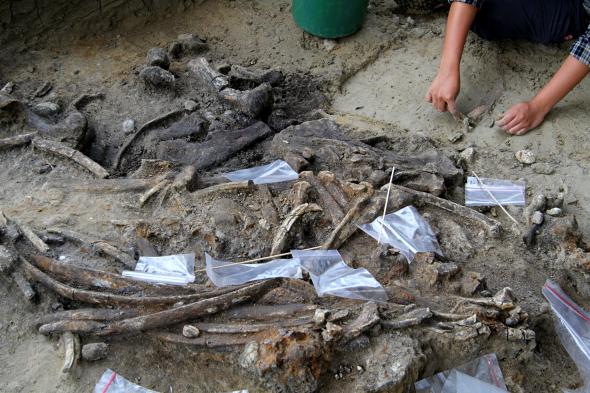
Evidence that somebody butchered a rhinoceros with stone tools on Luzon proves that the Philippines has been a home to humans for much longer than expected.
The archaeological find pushes the history of human habitation back to 709,000 years — considerably further than the previous evidence dating to 67,000 years ago.
A study published in the journal Nature yesterday (Wednesday, May 2) also says that the evidence pushes back the date for humans living in Southeast Asian islands in general.
Researchers came close to figuring out that Luzon may have been inhabited by early humans when stone tools and the fossils of large animals were discovered there in the 1950s.
But they weren’t able to securely date those findings to the Middle Pleistocene, which spans from 126,000 to 781,000 years ago.
But recent excavations in the Kalinga province of northern Luzon uncovered 57 stone tools and more than 400 bones of animals like monitor lizard, Philippine brown deer, freshwater turtles and stegodons, a now-extinct animal in the same family as elephants and mammoths.
The biggest find was an almost complete skeleton of a rhinoceros that showed clear marks of being butchered.
All of the remains were dated to 709,000 years ago using electron-spin resonance methods, which can date material in a way that radiocarbon dating can’t.
The discovery is important for a multitude of reasons, said study author Thomas Ingicco, associate professor at the Muséum National d’Histoire Naturelle.
“First is the very old age of this site which multiplies by ten the formerly known early presence of Hominins in the Philippines,” he said.
“Second is the evidence for colonisation of an ever-isolated island in The Philippines by the early Middle Pleistocene and therefore most likely by a hominin species other than Homo Sapiens.”
Although there is no direct fossil evidence to suggest who these early humans might have been, the “Kalinga toolmakers” represent a new area of research.
There is still debate over how the earliest humans could have reached the islands, before a time when most experts agree that humans began to build boats.
One theory is that inclement weather, such as typhoons, can create natural rafts out of vegetation capable of carrying hominins and animals.
“Colonisation of the islands could have been possible thanks to natural rafts such as floating mangroves that typhoons occasionally break off the coast,” Ingicco said.
“These floating islands would have come with animals and possibly hominins on them. Such natural rafts are quite well documented for historical periods and it is therefore a likely way of colonising Luzon Island during the mid-Pleistocene by hominins.”
Another big question is where they came from. Mr Ingicco said. “The other question is the origin of the dispersion. Did they come from the north as our team suspect or did they come from the west as some other archaeologists suspect?
“Comparing the early Middle Pleistocene fauna of the Philippines with what is known by the same age in China and in Indonesia will surely help to answer to this question.”
